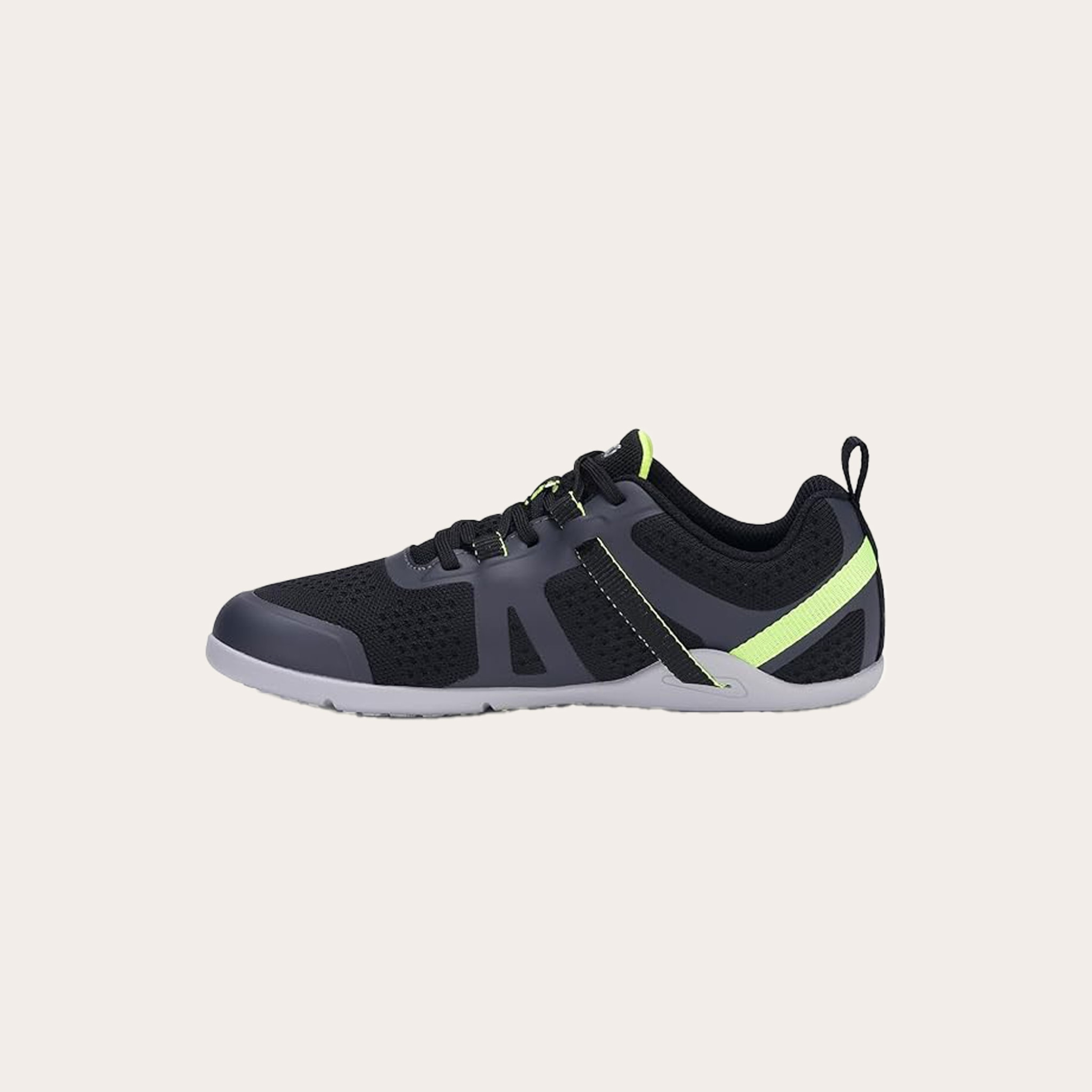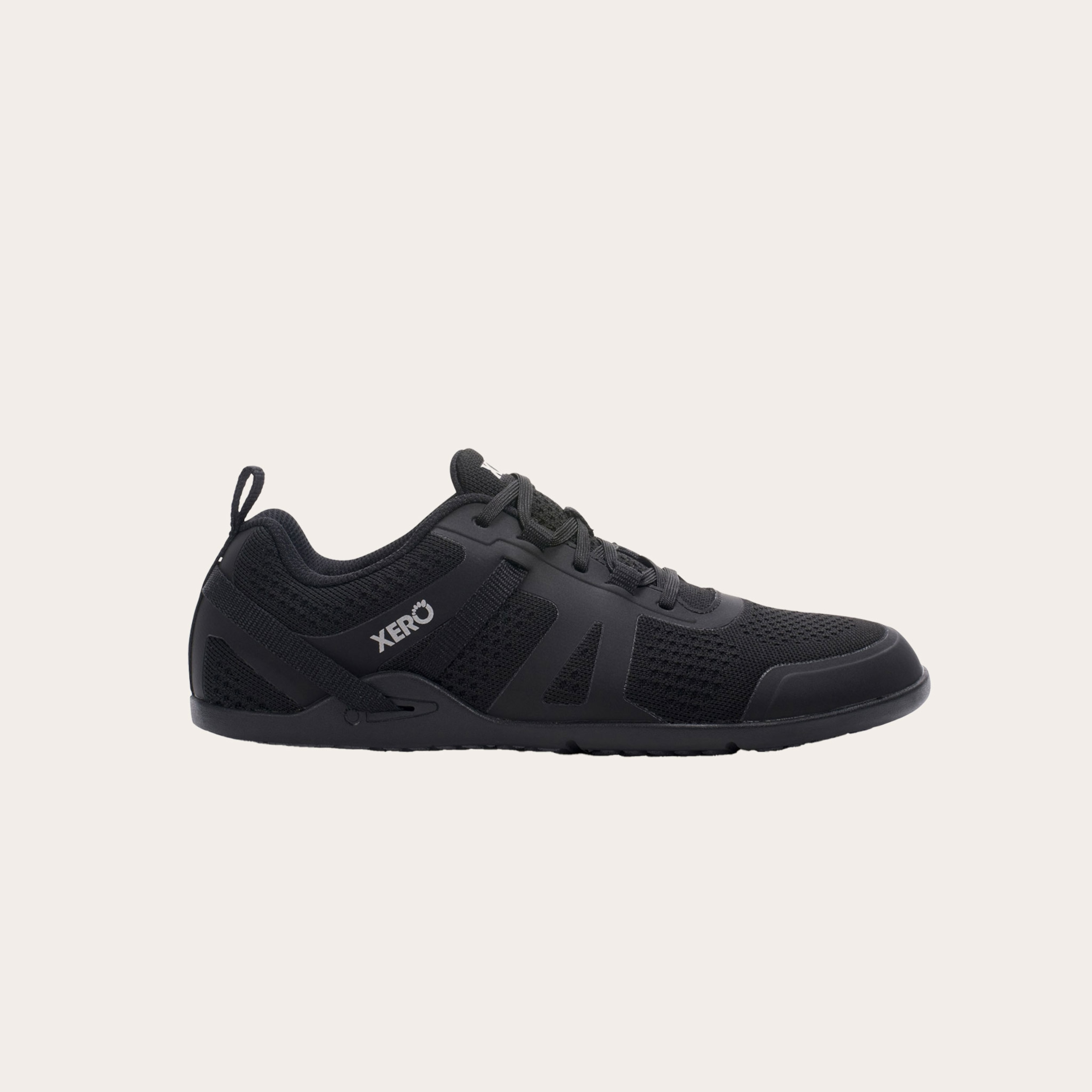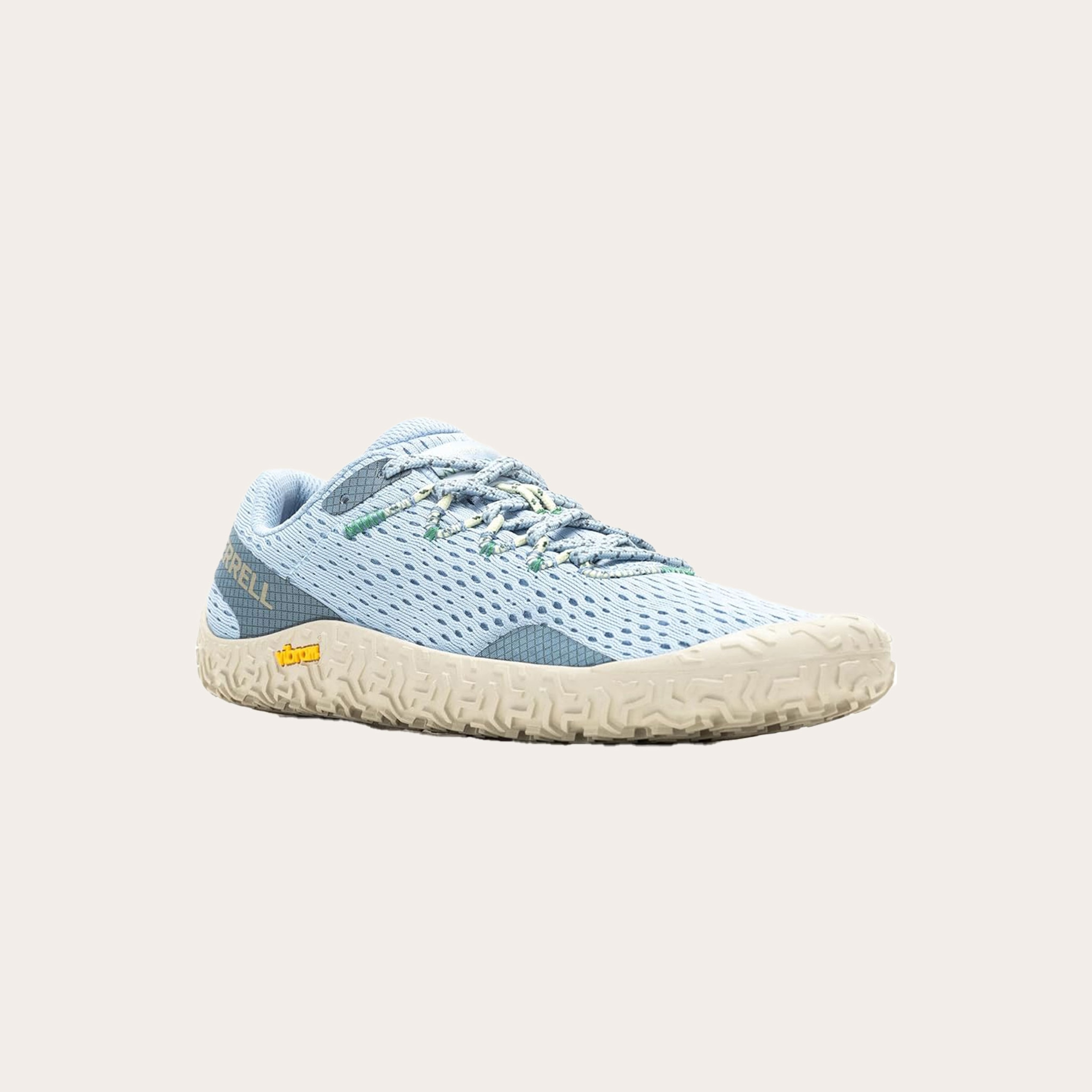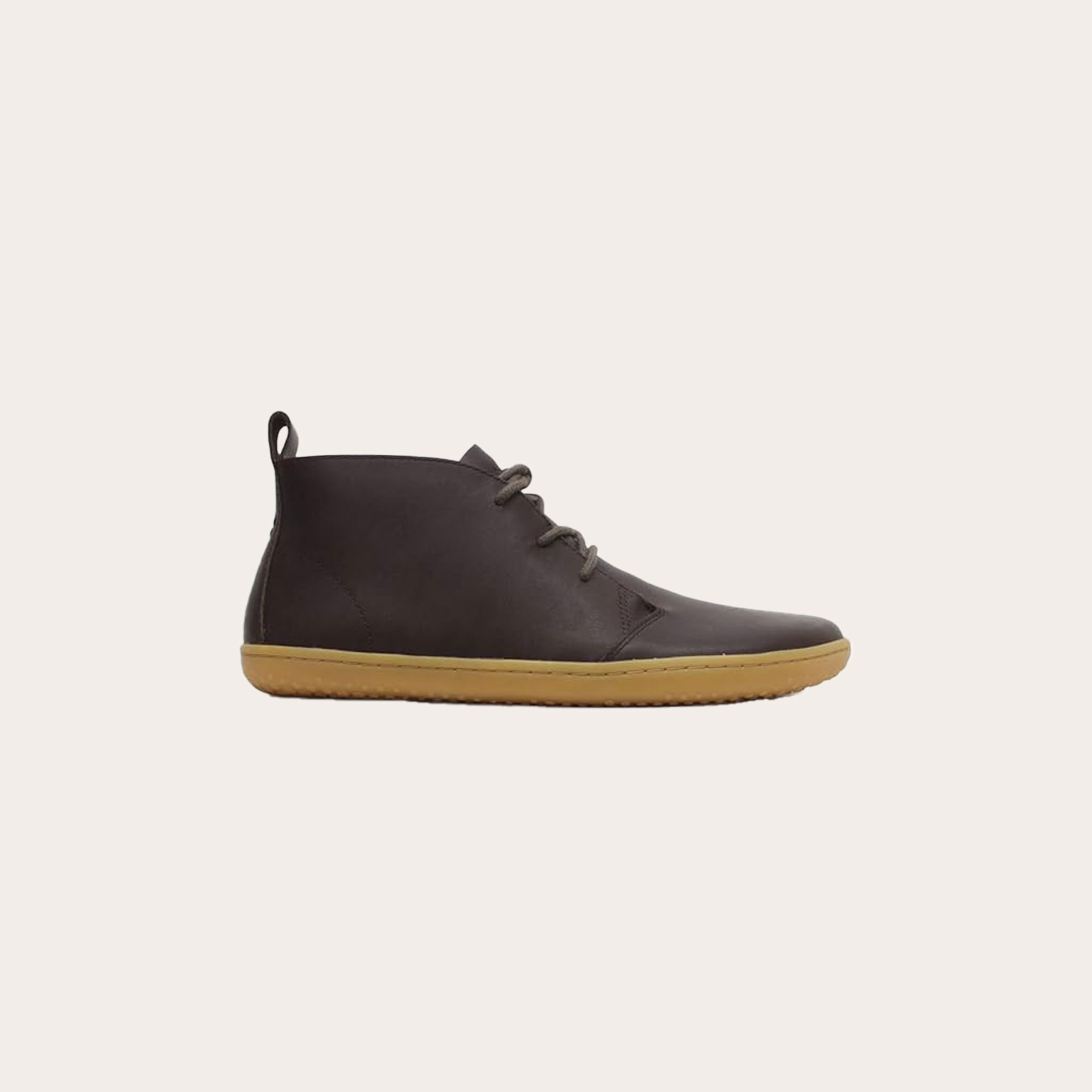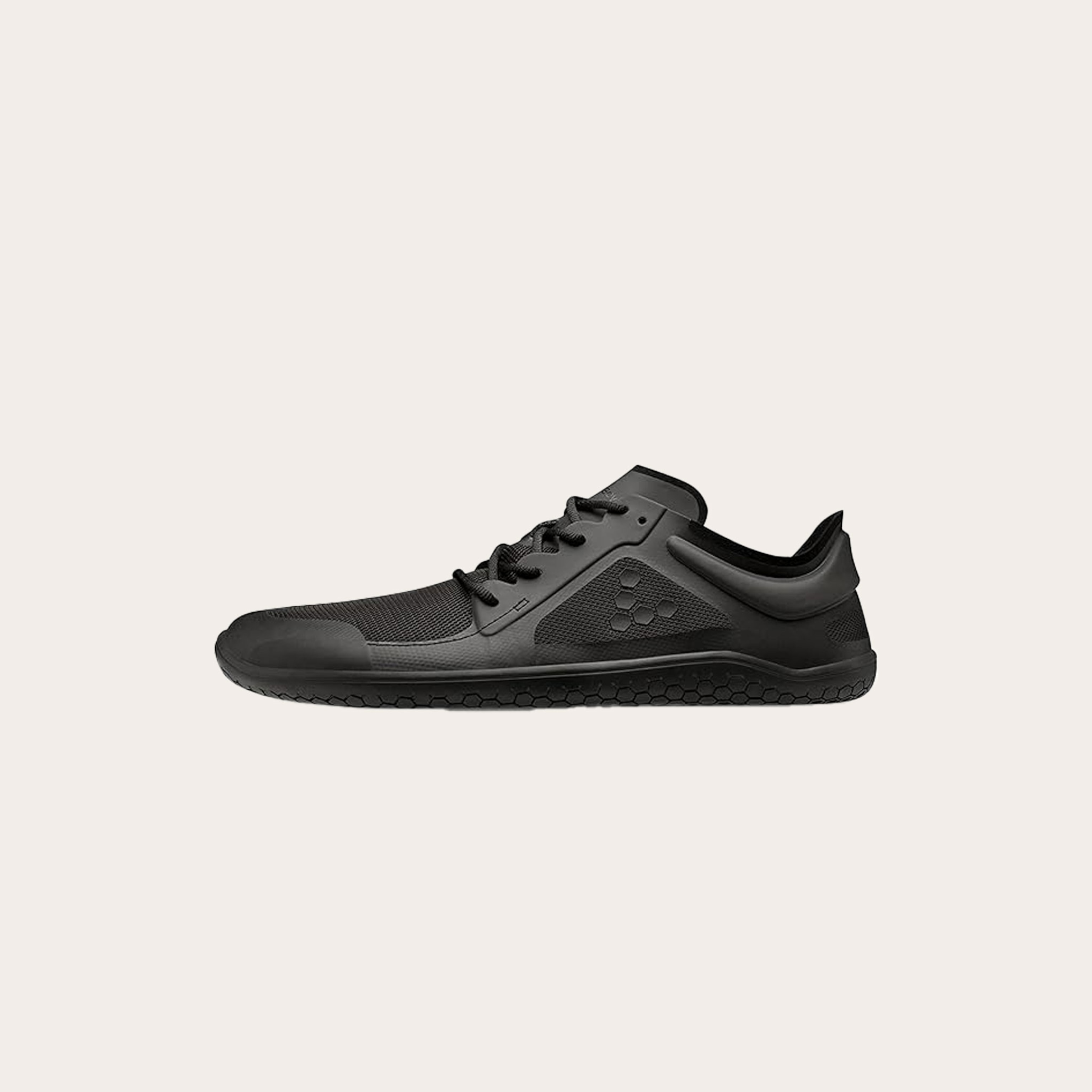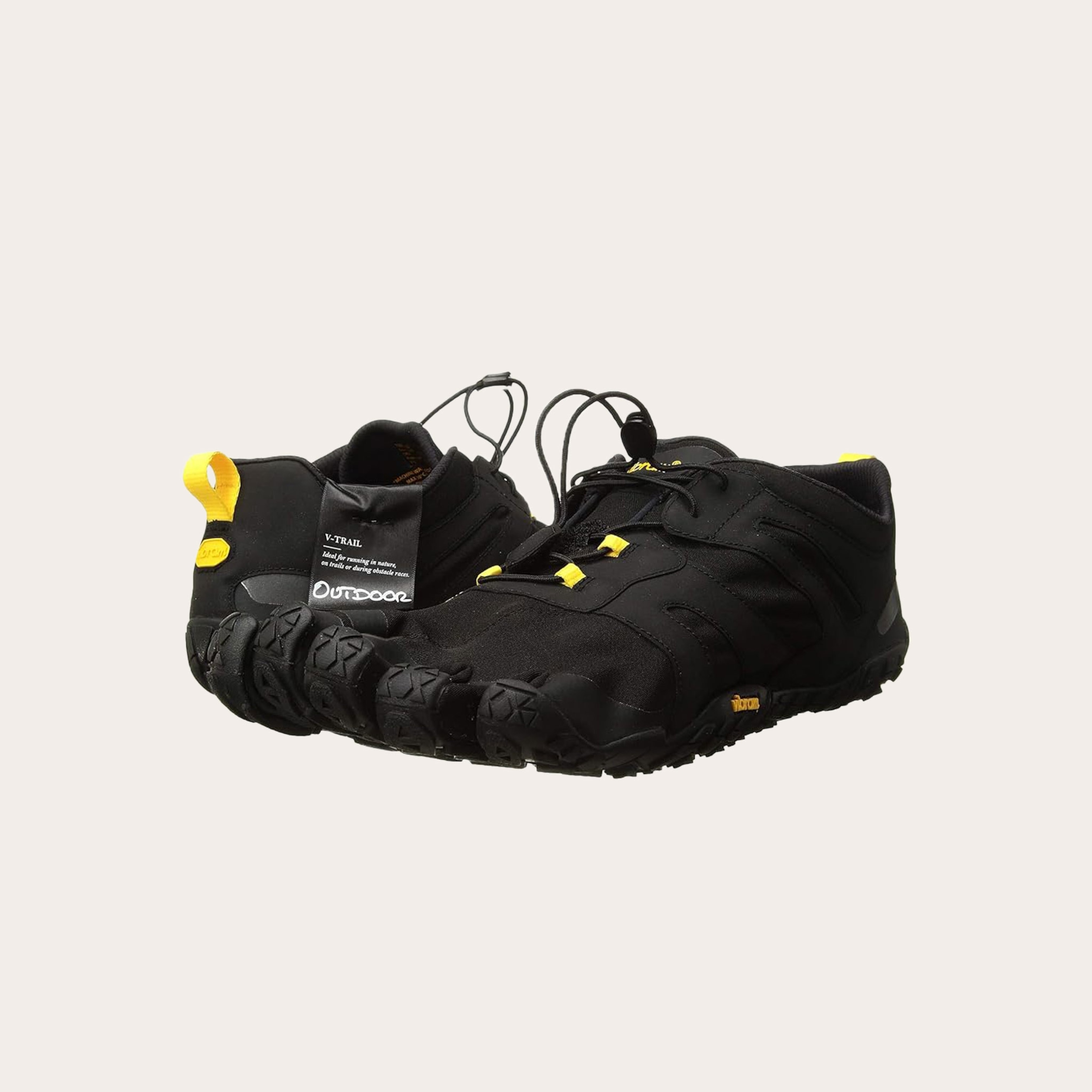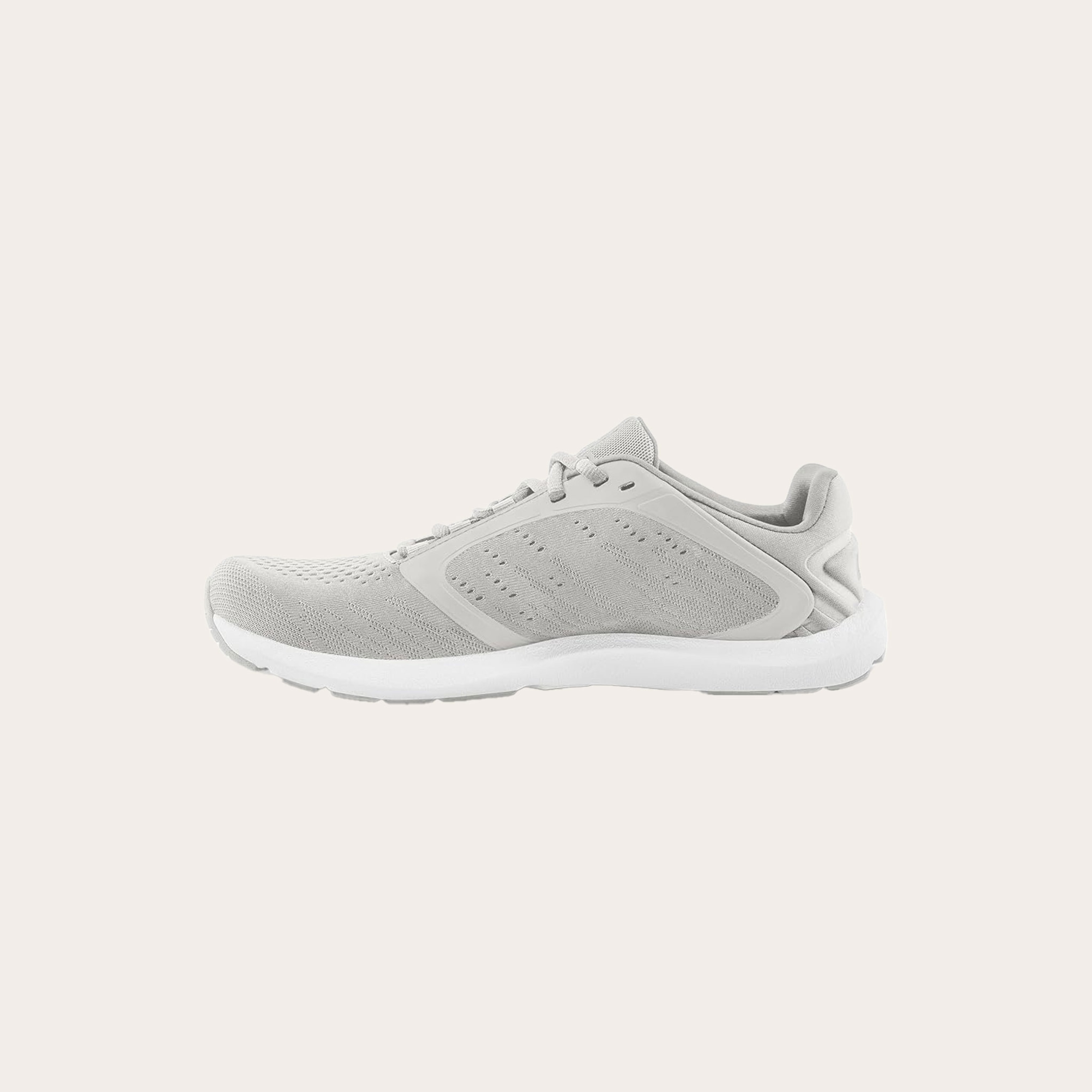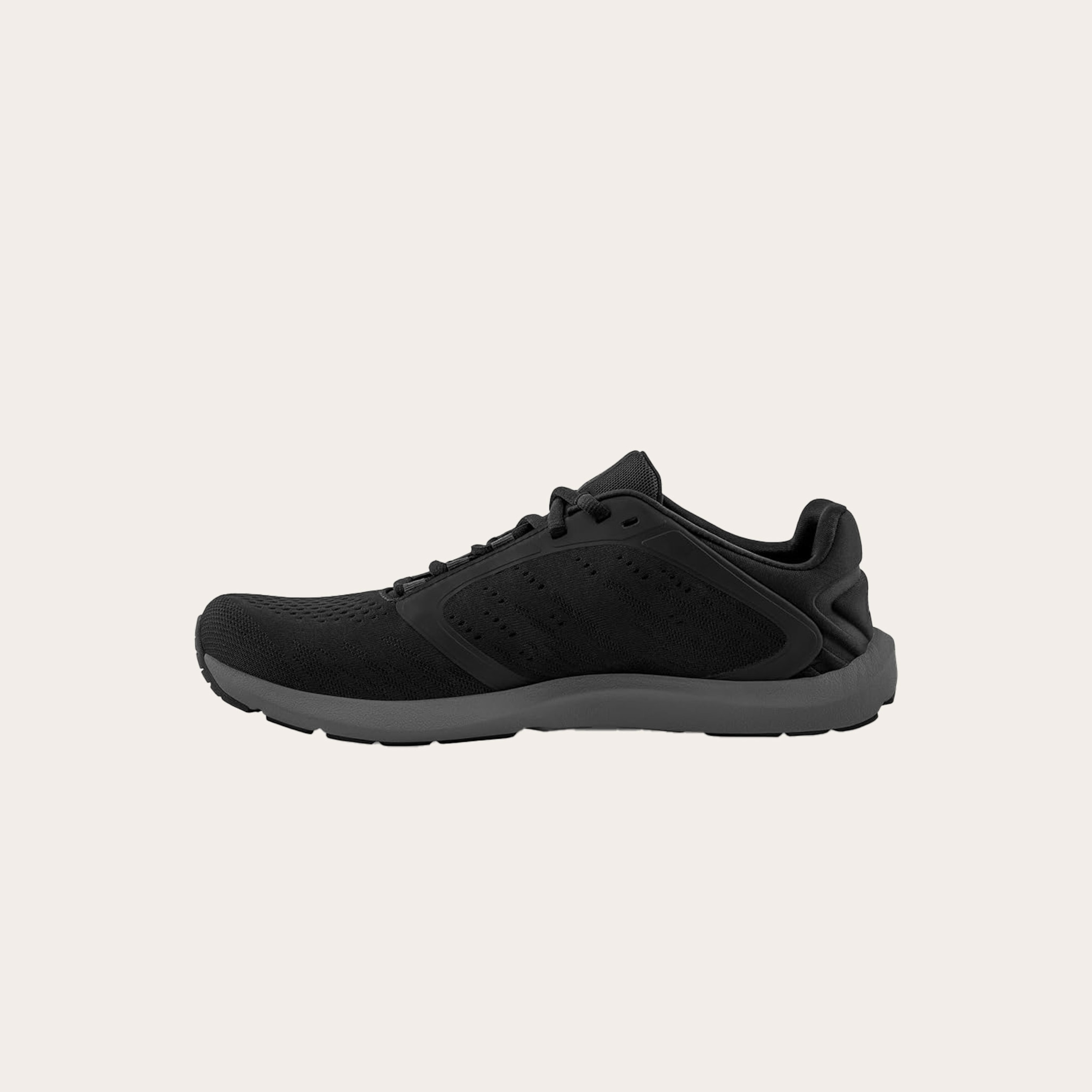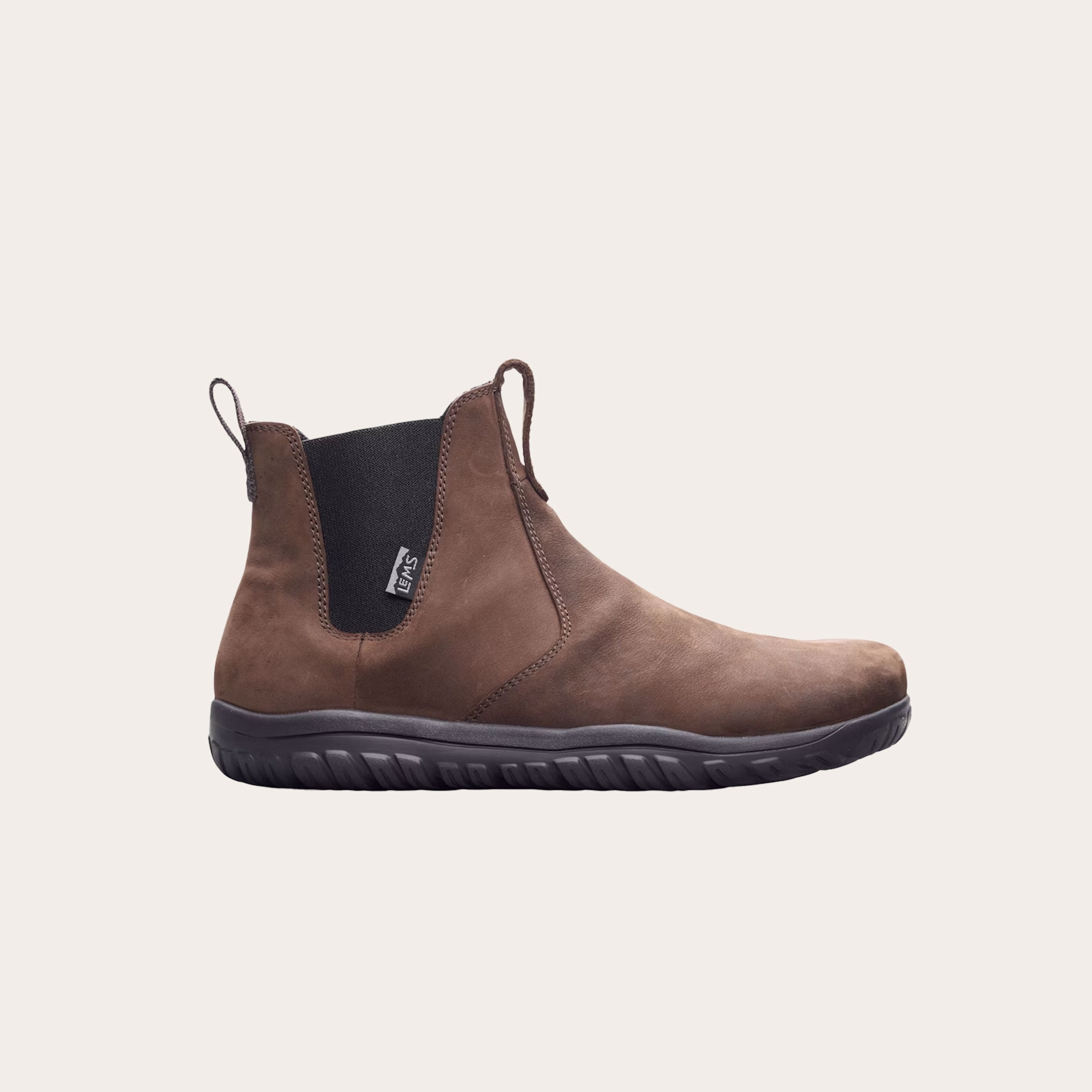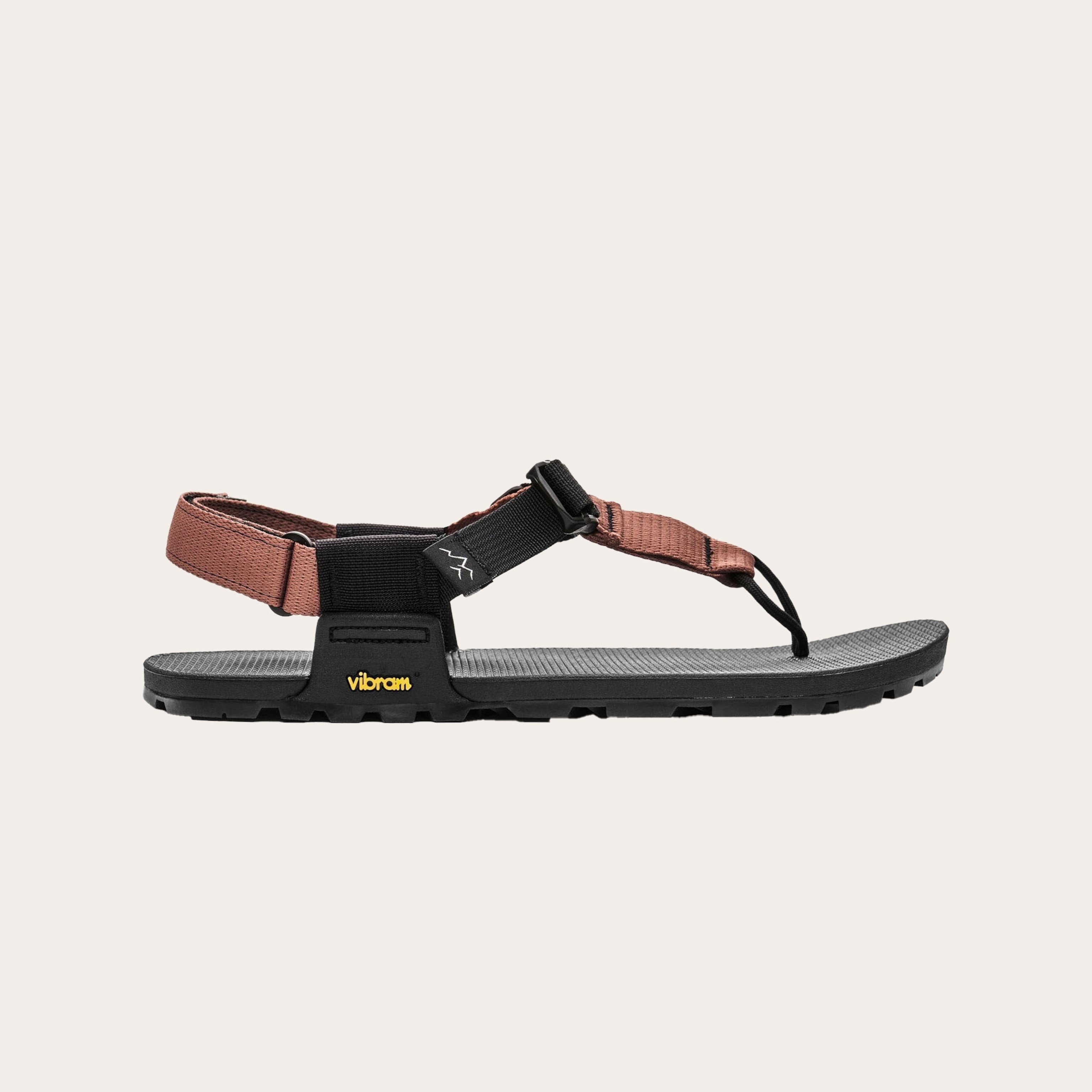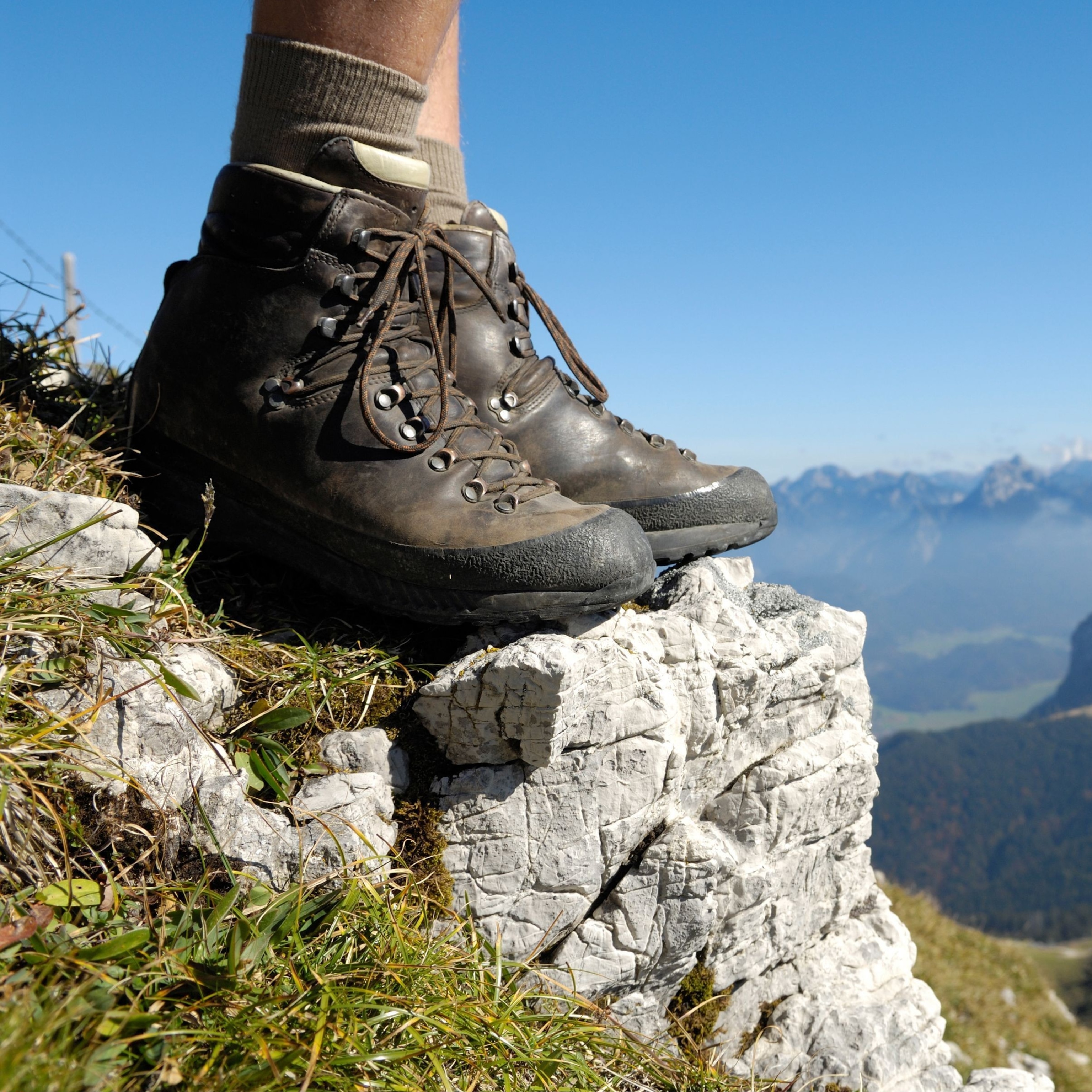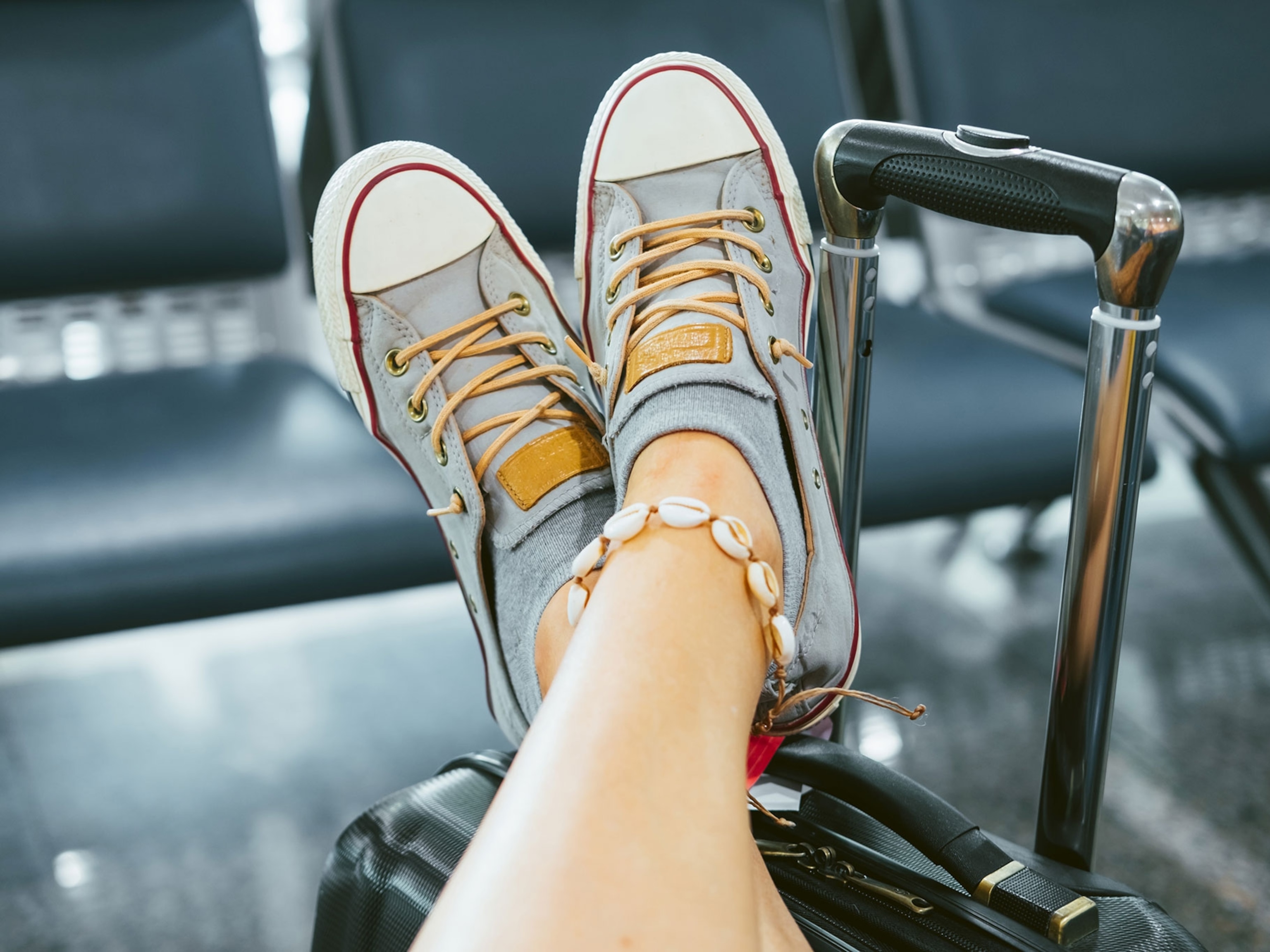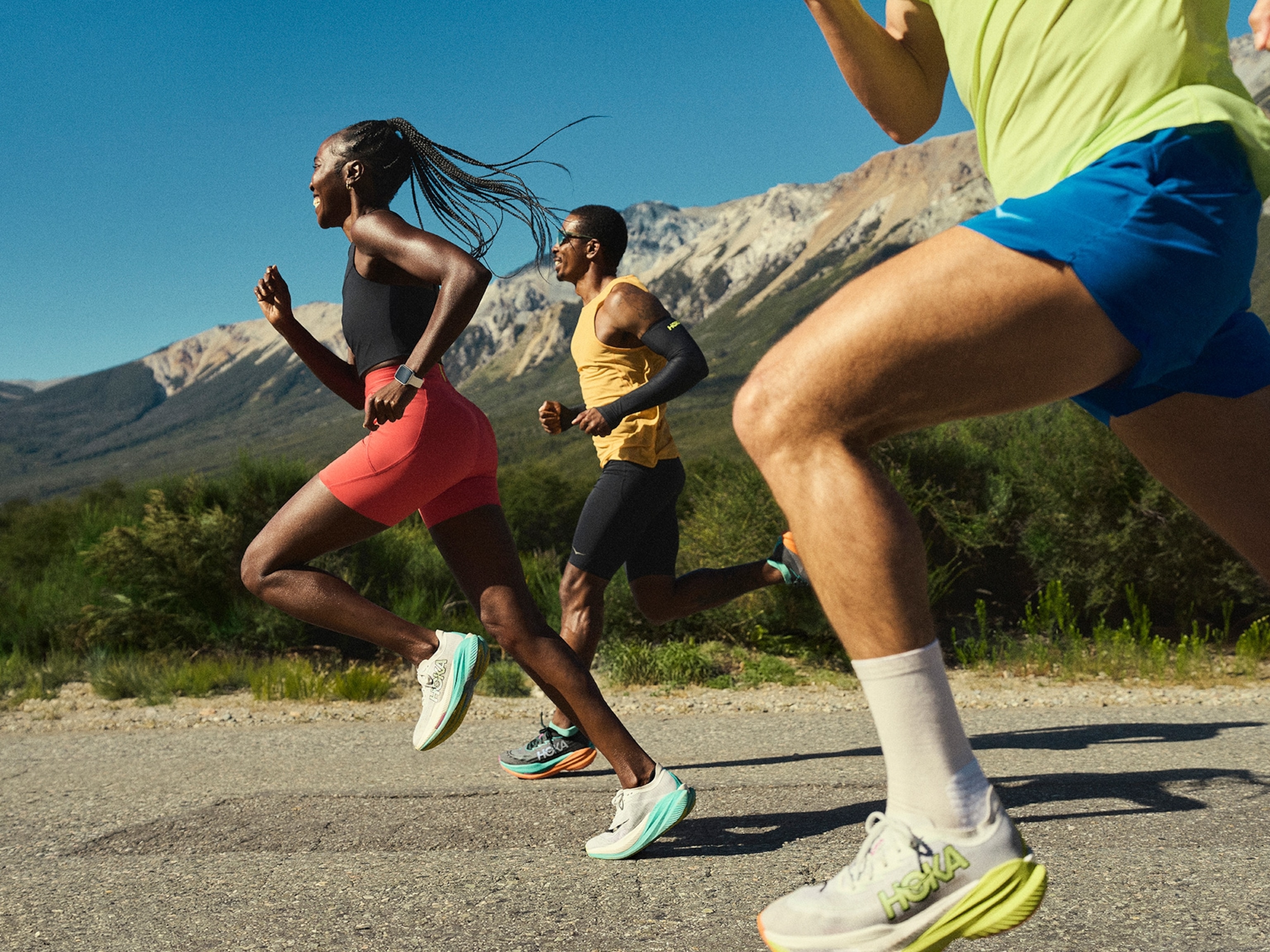Looking for barefoot shoes? Here are 15 to try.
Travelers interested in a lightweight, packable walking shoe may want to check out these trendy styles.
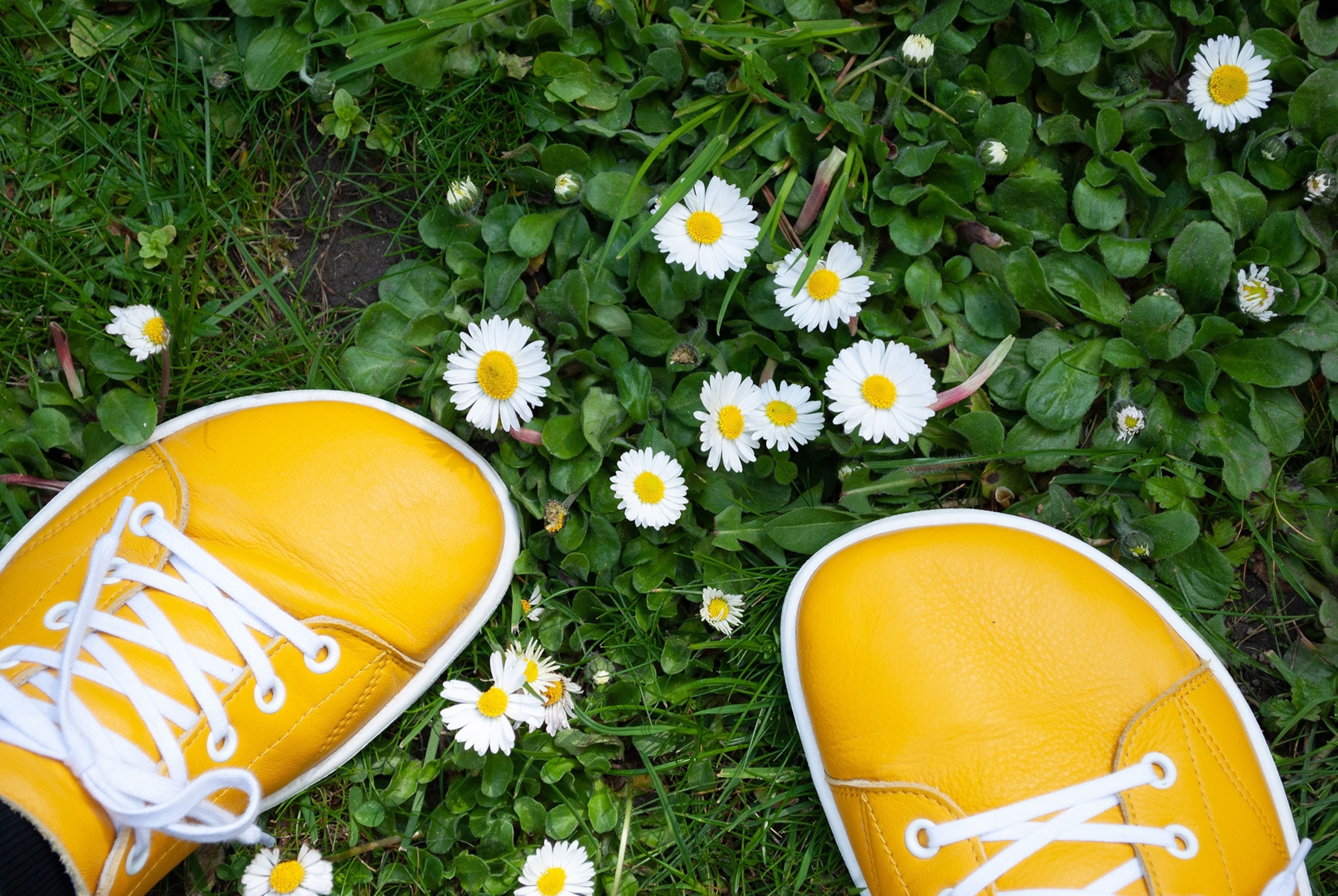
Books like Born to Run and sole maker Vibram’s FiveFinger shoe design helped spark the barefoot shoe movement. According to Google Trends, their popularity continues to grow, highlighting a shift toward minimalist footwear.
They may not be for everybody, but fans say these easy-to-pack shoes may have benefits. “Barefoot shoes let the foot function as it naturally would, with as little interference as possible,” says Jenifer Perez, a chiropractor and co-owner of Gait Happens, a clinic that provides foot education and gait analysis. “I know countless people for whom switching their shoes has made their knees feel better, made their back feel better.”
However, if you’re new to minimalist shoes, it’s best to check with your healthcare provider to make sure they’re right for you and gradually transition from traditional footwear.
Barefoot shoes share four key features: A wide toe box for natural toe splay, a thin sole that allows you to sense the terrain beneath your feet (known as “ground feel”), zero heel-to-toe drop, and a flexible design. Among the best options, the Xero Prio Neo (women’s; men’s) is our top pick because of its lightweight design and durable performance.
Our picks for the best barefoot shoes
• Best barefoot running shoes: Merrell Vapor Glove 6 (women’s; men’s)
• Best barefoot shoes for men: Vivobarefoot Gobi Iv
• Best barefoot shoes for women: Be Lenka Barebarics Zing
• Best everyday barefoot shoes: Vivobarefoot Primus Lite (women’s; men’s)
• Best barefoot hiking boots: Vivobarefoot Tracker II FG (women’s; men’s)
• Best barefoot walking shoes: Lems Primal Zen
• Best barefoot trail running shoes: Vibram V-Trail 2.0 (women’s; men’s)
• Best looking barefoot shoes: Nackt Manon Scots Pine
• Best barefoot shoes with arch support: Topo Athletic ST-5 Speed Trainer (women’s; men’s)
• Best barefoot boots: Lems Chelsea Waterproof (women’s; men’s)
• Best barefoot sandals: Bedrock Sandals Cairn Evo
• Best barefoot shoes for transitioning: Lems Primal 3 (women’s; men’s)
• Best barefoot running shoes for transitioning: Altra Escalante 4 (women’s; men’s)
• Best barefoot shoes for sensory feedback: Wildling Tanuki
The best barefoot shoes
Travelers trying barefoot shoes for the first time should check with their healthcare provider before diving in. When you’re ready, look for minimalist shoes with some cushion to help with the transition. Purists may prefer ultralight models with no padding. We’ve chosen options that cater to both beginners and seasoned barefoot shoe wearers. Our favorites are designed to provide sensory feedback and stability.
Best barefoot shoes overall: Xero Prio Neo (women’s; men’s)
Why we like it: The Xero Prio Neo is our pick for the best overall barefoot shoe because it’s so adaptable. Made from vegan materials, the Prio Neo has a little bit of everything for gym-goers and casual walkers. It has a zero-drop sole to help support natural alignment and a wide toe box that lets toes spread comfortably.
Reviewers especially like the grip from the “FeelTrue” sole, which works well on different surfaces. Plus, the shoe’s lightweight design makes it easy to wear all day. “We want our shoes to be able to curl up into a ball,” says John Wadley, vice president of product development at Xero. “The whole idea is we want the shoe to get out of the way so that the body can do what the body does best.”
We also appreciate thoughtful details like the adjustable midfoot and heel straps inspired by traditional Huarache sandals. If the outsoles wear down to a millimeter, Xero Shoes says they will replace them at 60 percent of the original price.
Keep in mind: One drawback of the Xero Prio Neo is the single ankle eyelet, which may limit secure heel lockdown for travelers prone to heel slippage during some fast-paced activities.
Product details: Stack height: 5.5mm | Weight: 8.7 oz. | Heel to toe drop: 0mm | Materials: Mesh and synthetic upper, “FeelTrue” outsole | Sizes: Men’s 6.5-15; women’s 5-12
Best barefoot running shoes: Merrell Vapor Glove 6 (women’s; men’s)
Why we like it: The Merrell Vapor Glove 6 is incredibly lightweight, flexible, and gets you about as close to running barefoot as any shoe can. The Vibram outsole with two-millimeter lugs helps provide excellent grip on roads and light trails, even in wet conditions.
Reviewers love the foot-shaped toe box, which lets your toes spread naturally, while the breathable mesh upper keeps feet cool. For the cost, it’s a solid choice for travelers looking to test out the barefoot running experience.
This minimalist footwear isn’t just for running—it’s versatile enough for hiking, walking, and even gym workouts. We like the sockless-ready design and the updated tread that adds durability and grip. Fans of minimalist footwear love that these shoes allow you to feel every bump in the road.
Keep in mind: The Vapor Glove 6’s minimalist design demands more from your feet, so transitioning gradually is key. Reviewers also note that the thin outsole can wear down faster on rough terrain.
Product details: Stack height: 6mm | Weight: 4.6 oz. | Heel to toe drop: 0mm | Materials: Mesh upper, EVA foam insole, Vibram “Ecostep” outsoles | Sizes: Men’s 7–15; women’s 5–11
Best barefoot shoes for men: Vivobarefoot Gobi IV
Why we like it: The Vivobarefoot Gobi IV has a handsome, timeless look, making it our top pick for men. The polished leather upper works at the office and in casual outings. The rubber outsole is made to be flexible without sacrificing durability. We also like that the insole—made from recycled polyurethane with a cork layer—is antibacterial and odor-reducing, according to the brand.
Additionally, Vivobarefoot has thoughtful programs aimed at extending the life of their shoes. You can resole or deep-clean them through the brand’s repair program. The company also offers a trade-in program, where customers earn 20 percent off a new pair. The company says you can also try them out for a hundred days.
Keep in mind: The leather upper requires regular maintenance to stay in good condition, which may not be ideal for those looking for a low-maintenance option.
Product details: Stack height: 3mm | Weight: 9.9 oz. | Heel to toe drop: 0mm | Materials: Leather upper, cork insole, rubber outsole | Sizes: 7-15
Best barefoot shoes for women: Be Lenka Barebarics Zing
Be Lenka Barebarics Zing
Why we like it: The Be Lenka Barebarics Zing are zero-drop minimalist shoes that look like classic sneakers, making them versatile enough to pair with lots of outfits. Reviewers love the wide toe box for natural toe splay and the lining made to help keep feet cool and dry. The removable insole is another nice touch, allowing travelers to change up ground feel.
What really stands out is how comfortable the Zing becomes over time. The thicker sole provides a bit more structure than some other barefoot options, but it’s flexible enough to give you a natural feel once these shoes are broken in.
The Zing is a great choice for casual walkers or anyone transitioning to barefoot footwear, who need more support but don’t want to sacrifice the zero-drop feel.
Keep in mind: The leather upper can feel stiff at first and takes some time to break in. While the sole is flexible enough for everyday use, it’s less suited for athletic activities, like running or gym workouts.
Product details: Stack height: 6mm | Weight: NA | Heel to toe drop: 0mm | Materials: Nappa leather upper, polyurethane recycled material insole, “ComfortGrip” sole | Sizes: 5-15.5
(9 of the best walking shoes for women)
Best everyday barefoot shoes: Vivobarefoot Primus Lite III (women’s; men’s)
Why we like it: The Vivobarefoot Primus Lite III has a clean design that’s casual enough for daily wear. Reviewers appreciate this barefoot shoe’s light weight and flexibility, making them easy to pack for travel or slip into a daily routine.
The upper is made from mostly vegan materials, including recycled PET and polyester. The brand says the insole is made of polyurethane foam that is 98 percent recycled. Whether you’re road running, hitting cafes, or just heading out for errands, this shoe has a solid, responsive base that feels natural and intuitive.
Like other Vivobarefoot models, the Primus Lite III is part of a trade-in program that allows you to recycle your old shoes for a discount on new ones—a sustainability feature we appreciate.
Keep in mind: We found that the Primus Lite III can feel slippery on wet or loose surfaces.
Product details: Stack height: 7mm | Weight: 8.2 oz. | Heel to toe drop: 0mm | Materials: Recycled PET and polyester upper, polyurethane foam insole, rubber outsole | Sizes: Men’s 7-15; women’s 4.5-11
Best barefoot hiking boots: Vivobarefoot Tracker II FG (women’s; men’s)
Men’s Vivobarefoot Tracker II FG
Why we like it: Perez says the Vivobarefoot Tracker II FG offers a barefoot feel without sacrificing durability or comfort, making them great for hiking. The leather upper is made to hug the foot and ankle, helping to provide stability on uneven terrain, while maintaining flexibility for natural movement.
The boot’s waterproof features—hydrophobic treatments, a recycled breathable membrane, and high-tech seal seaming—make it a good choice for wet conditions. The thermal insole helps keep feet comfortable in a range of temperatures. You can also remove the insole if you want more ground feel.
Reviewers note that the two-and-a-half-millimeter lugs are fantastic at gripping tricky terrain, from rocky trails to muddy paths. They also say the boot does a good job of shedding dirt and debris while maintaining traction. While it is heavier than other barefoot options, the tradeoffs may be worth it for barefoot enthusiasts looking for a sturdy hiking boot.
Keep in mind: Some reviewers say the connection between the upper and outsole can start to come apart with heavy use, which could eventually impact the boot’s waterproofing.
Product details: Stack height: 5.5mm | Weight: 20.3 oz. | Heel to toe drop: 0mm | Materials: Leather upper, thermal insole, rubber outsole | Sizes: Men’s 7-15; women’s 4.5-11
Best barefoot walking shoes: Lems Primal Zen
Why we like it: The Lems Primal Zen combines a casual style with comfort that lasts all day. The wide toe box gives toes plenty of room to splay, while the cork-lined footbed helps keep feet cool and comfortable. You can wear socks or go barefoot with these shoes. Reviewers say the gusseted tongue helps ensure a more secure fit.
The Primal Zen’s outsole is made using Lems’ “injection-blown rubber” (IBR) technology, which the brand says creates a sole that is both protective and responsive. The outsole is designed for varied terrain, making this barefoot shoe ideal for casual hikes, long walks, and everyday adventures.
This shoe is a great option for those new to barefoot footwear, thanks to the slightly higher stack height and optional cork insole that dampens the ground feel for an easier transition. The Primal Zen also comes in vegan, suede, and leather options.
Keep in mind: The outsole is stiffer in the heel area, which may feel less natural for seasoned barefoot shoe wearers. The insole also reduces ground feedback, though it’s removable to give a more minimalist feel as wearers transition.
Product details: Stack height: 9.5mm | Weight: 8.2 oz. | Heel to toe drop: 0mm | Materials: Microfiber and air mesh upper, cork insole, injection blown rubber outsole | Sizes: Men’s 4.5-15; women’s 6-12
(Here are the best walking shoes for every kind of trip)
Best barefoot trail running shoes: Vibram V-Trail 2.0 (women’s; men’s)
Why we like it: The Vibram V-Trail 2.0 stands out because it combines natural foot movement with protective features designed for more rugged trails and terrain. This shoe has Vibram’s famous Megagrip outsole, giving it great traction on dirt, gravel, and rocky trails.
The mesh woven into the sole is designed to help disperse impact from sharp objects like rocks and roots, according to the company. This means you get a balance of ground feel without losing out on protection, which is ideal for trail runners who want to stay connected to the terrain without sacrificing safety.
Reviewers also praise the shoe’s secure fit and dexterity. The five-toe design encourages natural toe splay, enhancing stability and grip, and the quick-lacing system ensures a snug fit during runs. The upper is made from durable, water-repellent material, making it a reliable choice for wet conditions or unpredictable weather.
Keep in mind: The five-toe design may take some getting used to for trail runners new to barefoot shoes. Some reviewers also note the upper lacks breathability and can get sweaty during long runs, which may require wearing moisture-wicking socks.
Product details: Stack height: 5.7mm | Weight: 6.4 oz. | Heel to toe drop: 0mm | Materials: EVA insole, Vibram Megagrip rubber outsole | Sizes: Men’s 4.5-16.5; women’s 6-10.5
(Love Hoka? Here are their best walking shoes.)
Best looking barefoot shoes: Nackt Manon Scots Pine
Nackt Manon
Why we like it: Stylish barefoot shoes are hard to come by. These have a sleek, retro-inspired design that pays homage to 1970s track and field aesthetics. It’s understated yet has all the elements that barefoot shoe fans look for, including a flexible zero-drop sole and broad toe box. We like how the padded tongue sits for all-day comfort and the suede touches.
We especially appreciate the craftsmanship that comes from the family-owned factory in Portugal, where it’s made.
Keep in mind: The Manon is a casual trainer that may not be suitable for more athletic activities.
Product details: Stack height: 6.8mm | Weight: 7.9 oz. | Heel to toe drop: 7.9mm | Materials: Leather upper, rubber outsole | Sizes: Men’s 5-12; women’s 4-14
Best barefoot shoes with arch support: Topo Athletic ST-5 Speed Trainer (women’s; men’s)
Why we like it: With a raised arch, the Topo Athletic ST-5 Speed Trainer is a solid choice for anyone easing into barefoot shoes or looking for a minimalist trainer with a touch of support.
At 14 millimeters, the stack height is higher than most minimalist shoes, offering a cushion that bridges the gap between traditional trainers and barefoot designs.
The antimicrobial Ortholite insole adds a layer of comfort, helping to keep feet fresh during long days of exploring. We found the midsole to be flexible and responsive, providing a stable yet dynamic feel for a variety of activities, from easy runs to light strength training.
Keep in mind: The exposed foam in some areas of the outsole may not hold up well on rough trails or in wet conditions, making this shoe better suited for the gym or road wear.
Product details: Stack height: 14mm | Weight: 6.6 oz. | Heel to toe drop: 0mm | Materials: Mesh upper, Ortholite insoles, rubber outsole | Sizes: Men’s 8-14; women’s 6-11
Best barefoot boots: Lems Chelsea Waterproof (women’s; men’s)
Women’s Lems Chelsea Waterproof
Why we like it: This Lems barefoot shoe model combines the classic Chelsea boot style with functional barefoot features. These full-grain leather boots have a zero-drop sole and an injection-blown rubber outsole that helps the shoe stay grippy on city sidewalks and snowy trails.
We also love the practical details, like the pull tabs and elastic panels that make these boots easy to pull on and off. The removable insole lets you adjust the level of ground feel. While slightly heavier than some barefoot shoes, these boots are designed to handle cooler weather and light outdoor adventures with ease.
Keep in mind: Some reviewers say these boots are too roomy in the ankle.
Product details: Stack height: 11mm | Weight: 9.8 oz. | Heel to toe drop: 0mm | Materials: Leather upper, adventure poly insole, injection blown rubber outsole | Sizes: Men’s 4.5-15; women’s 6-12
Best barefoot sandals: Bedrock Sandals Cairn Evo
Why we like it: These Bedrock Sandals are rugged, versatile, and thoughtfully designed. Featuring Vibram XS Trek EVO outsoles, these sandals provide excellent grip on everything from dirt trails to rocky paths. The multiple adjustment points ensure a secure fit for different foot shapes. Lightweight and durable, they’re great for all-day hiking.
We love details like the grid-patterned footbed that provides traction, even when wet, and the straps that avoid over-reliance on Velcro, meaning they’ll hold up better over time. Bedrock’s Re-Soul Repair Program is another highlight—you can replace worn soles or straps to extend the life of your sandals, keeping them out of landfills.
Keep in mind: While these sandals perform well in most conditions, the strap design can feel less stable when walking through rivers or streams.
Product details: Stack height: 14mm | Weight: 7.8 oz. | Heel to toe drop: 0mm | Materials: Polyester and nylon webbing, Vibram XS Trek EVO outsoles | Sizes: Men’s 5-14; women’s 6-15
(Try these recovery shoes after a long day of exploring)
Best barefoot shoes for transitioning: Lems Primal 3 (women’s; men’s)
Women's Lems Primal 3
Men's Lems Primal 3
Why we like it: The Lems Primal 3 is great for transitioning because it offers the right balance of minimalist features and everyday comfort. It’s got a zero-drop sole, ultra-wide toe box, and a lightweight design, plus enough cushion from the recycled polyurethane insole. Reviewers also love the breathable microfiber and mesh upper, which help keep feet cool during extended use.
We like that the redesigned outsole is wider than its predecessor, the Primal 2, offering better ground contact and improved stability for daily wear and light outdoor activities. If you want more ground feel, you can remove the insole.
Keep in mind: While the Primal 3 offers more cushioning and structure than traditional barefoot shoes, it does reduce ground feel compared to its predecessor. It’s also not intended for intense activities or technical trails.
Product details: Stack height: 9.5mm | Weight: 8.6 oz. | Heel to toe drop: 0mm | Materials: Microfiber and mesh upper, recycled polyurethane insole, injection blown rubber outsole | Sizes: Men’s 4.5-15; women’s 6-12
Best barefoot running shoes for transitioning: Altra Escalante 4 (women’s; men’s)
Why we like it: The Altra Escalante 4 combines zero-drop design with a touch of cushioning for a comfortable yet natural running experience. The “Altra EGO” midsole provides a responsive feel underfoot, making this one of our favorites for runners easing into minimalist footwear without sacrificing comfort.
This latest version of the Escalante returns to the features fans loved about the original 1.5, like a flexible, lightweight design and a knit upper for a sock-like fit. The revamped rubber outsole enhances ground feel and traction, while the spacious toe box gives feet the freedom to move naturally. We also love that it has an American Podiatric Medical Association (APMA) Seal of Acceptance, awarded to products that the Association determines promote good foot health.
Keep in mind: While this knit upper is cozy, it lacks ventilation, which could make the shoe less comfortable in warm climates. Additionally, runners with narrow feet may find the extra room in the toe box too spacious.
Product details: Stack height: 24mm | Weight: 9.5 oz. | Heel to toe drop: 0mm | Materials: Engineered knit upper, “Altra EGO” midsole, rubber outsole | Sizes: Men’s 7-15; women’s 5.5-12
Best barefoot shoes for sensory feedback: Wildling Tanuki
Wildling Tanuki
Why we like it: The Wildling Tanuki has a split sole, inspired by traditional ninja warrior shoes, designed for flexibility and heightened sensitivity to the ground. The upper is crafted from stretch washi—a paper-polyester blend so thin you can see the light pass through it. It’s breathable, quick-drying, and antibacterial, according to the brand.
The removable insole, made from a blend of hemp and flax, helps regulate temperature and moisture, making these shoes a great option for warm, dry climates. The outsole is impressively thin, with synthetic rubber and cork adding durability.
Keep in mind: Because the shoe is made of washi, it’s not the best choice for keeping feet dry in wet weather.
Product details: Stack height: 2.5mm | Weight: 3 oz. | Heel to toe drop: 0mm | Materials: Washi upper, rubber, and silica outsole | Sizes: Men’s 4-13.5; women’s 5-14
(These are the best walking shoes for plantar fasciitis)
How we chose the best minimalist shoes
When selecting the best barefoot shoes, we considered multiple factors to ensure our recommendations would serve both newcomers and experienced barefoot enthusiasts.
• Third-party reviews: We analyzed customer feedback across multiple platforms to understand long-term performance and durability. Real-world experiences from verified purchasers provided valuable insights into how these shoes held up in different conditions and situations.
• Expert interviews: We consulted with foot health professionals, including Jenifer Perez, a chiropractor from Gait Happens, to understand the biomechanical aspects of barefoot shoes and their impact on foot health. These insights helped us evaluate which features matter most for different activities.
• Personal experience: We tested most of these shoes in various environments to evaluate their performance, comfort, and versatility. This hands-on testing helped us understand nuances that might not be apparent from specifications alone.
• Material quality: We assessed the durability and sustainability of materials used, looking for shoes that balance environmental responsibility with long-term performance.
Anatomical design: We evaluated each shoe’s toe box width, sole flexibility, and overall design to ensure they allow natural foot movement, while providing appropriate protection.
Tips for buying barefoot shoes
Material
Choose materials that align with how you plan to wear barefoot shoes and where. Water-resistant leather works well for wet conditions, while breathable mesh is better for warm weather and indoor activities. For all-weather versatility, look for quick-drying synthetic materials that maintain their shape and performance when wet.
Stack height
Stack height refers to the total thickness of material between your foot and the ground, and it directly affects ground feel and protection. Beginners might prefer greater stack heights, such as the Altra Escalante 4’s (men’s; women’s) 24mm for more cushioning. At the same time, travelers used to minimalist footwear often opt for minimal stack height for maximum sensory feedback. Consider your experience level and how you plan to wear barefoot shoes when choosing stack height.
Activity-specific features
Consider the primary reason you want to wear barefoot shoes. Trail running requires more aggressive tread patterns and durability, while casual wear prioritizes style and comfort. For the best experience, match the shoe’s features to the activities you’re planning.
Transition periods
It can take some time to transition to barefoot shoes from traditional shoes. “Don’t spend $200 on a pair of shoes if you haven’t tried going barefoot,” advises Perez. “Try going barefoot at home first. If you feel better barefoot at home than you do when you’re out walking around [in regular shoes], then maybe try some barefoot shoes for a shorter walk, and then build up that tolerance.”
Frequently asked questions
Are barefoot shoes healthy for you?
While some research shows potential benefits like improved balance and natural gait, the health impact varies by individual.
Barefoot shoes require feet to work harder, which can be beneficial over time but may not be suitable for everyone. It’s important to consult a health professional before trying barefoot shoes, especially if you have significant injuries or conditions like severe arthritis.
Perez suggests that barefoot shoes can promote natural foot strength and movement patterns, but the transition should be gradual and mindful of your body’s response.
Can you walk long distances in barefoot shoes?
Yes, you can walk long distances in barefoot shoes once you’ve properly adapted to them. However, it’s crucial to build up gradually and listen to your body. Start with shorter distances and slowly increase the distance as feet and legs strengthen. For new wearers, starting with short walks and progressively increasing duration can help ease the transition.
Do you need to wear socks with barefoot shoes?
Wearing socks with barefoot shoes is largely a personal preference. Some barefoot shoes are designed for sockless wear with antimicrobial properties, while others work better with thin socks. Certain socks, like toe socks, are designed to allow for more toe splay and pair well with minimalist footwear.
How long does it take to adjust to barefoot shoes?
The adjustment period varies depending on your foot strength and previous footwear habits. For most people, it can take six-12 weeks of gradual wear to build strength and adapt to the increased sensory input. Start with shorter periods and daily barefoot exercises to ease the transition.
Another way to help the transition is with insoles. Perez recommends NorthSole insoles “if someone buys a zero shoe, but they’re not quite ready for it yet, and they need a little bit more cushion.”
